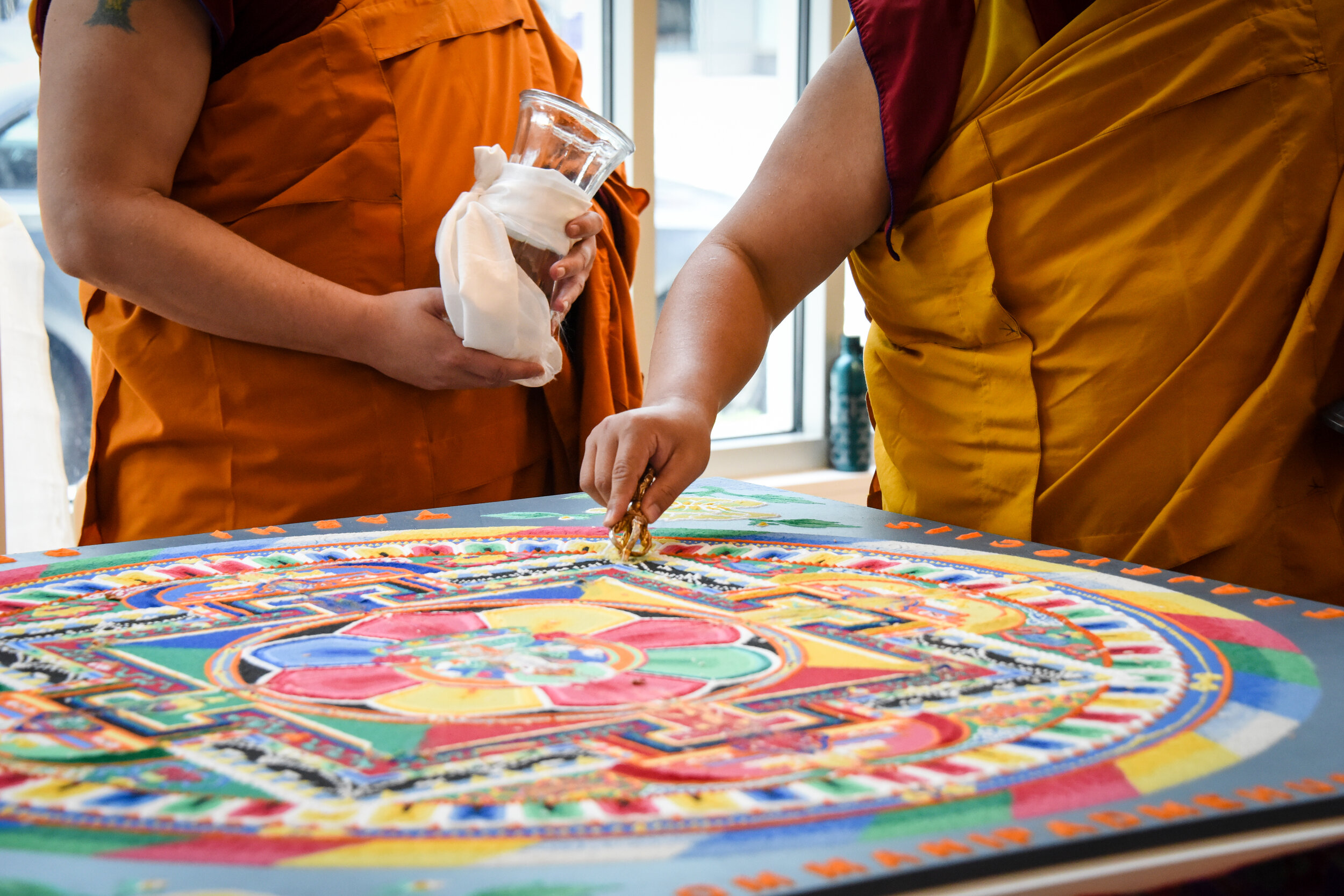








The Himalayan region—often referred to as the "roof of the world,"—has traditionally been considered a domain where time stands still. However the Himalayas, as all other places on earth, are undergoing rapid political and cultural change in our Anthropocene age. This change is marked by many forms of contemporary agency, ranging temporally from the durational to momentary, from present-day to deeply historic ways of engaging both the global and the local. Himalayan Contemporary explores the plural, co-existing time scapes that comprise the present for these two states.
In this exhibition we present a range of contemporary practices by diasporic Himalayan artists, three from Tibet and two from Nepal. From October 15-22, 2017, The Arts at CIIS will host four visiting monks from the Sera Monastic University in Karnataka, India, who will create a sand mandala, an antique traditional form of ritual painting using colored sand to create a sacred cosmogram. As host site for Epiphany Production’s annual Trolley Dances (October 20-22), we host performances by Chaksam-pa, the Tibetan Dance and Opera company from the Bay Area, which stages traditional folk art marked by contemporary interpretations. And in the Desai | Matta Gallery at CIIS we will be exhibiting the work of three artists between October 15, 2017 and February 28, 2018: an exhibition of paintings by AngTsherin Sherpa, who lives in Northern California, and whose engagements deconstruct mandala forms to express the semantic ambiguity of traditional signs in the contemporary world; Newari artist Dinesh Charan Shrestha, who lives in Berkeley and paints Hindu deities in hypnotic detail using post-Renaissance realism; and Youdshishtir Maharjan, who lives in New Hampshire, and creates “meaningless” repetitive visual gestures inspired equally by Samuel Beckett and Buddhist sand mandalas